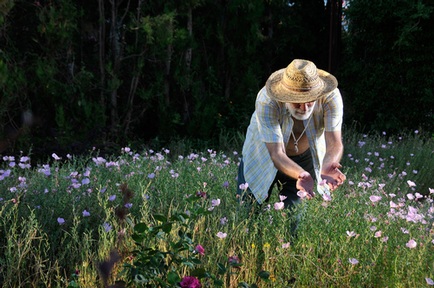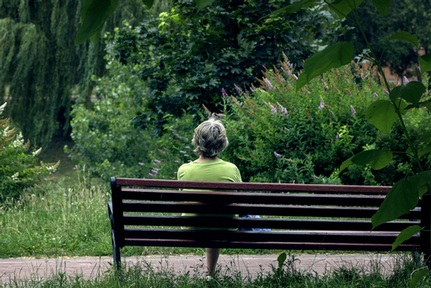Dementia-friendly gardens should be 'restorative' and 'promote activity'
The simple act of going outdoors and breathing in the fresh air and seeing the leaves blowing in the wind can have a huge impact on someone’s emotional wellbeing, yet care homes can sometimes struggle to get residents to go outside.

Anna Johnson, senior project officer at Learning Through Landscapes, revealed that she visited a care home and asked why the residents don’t go outside and the care home came up with a plethora of reasons, 'the residents say it is too hot, too wet, too many steps, too dangerous, etc'.
However she has found “the primary driver of getting residents outside is the culture of the care in the home itself”.
Speaking at the Residential and Home Care Show, Ms Johnson said: “You can make the most beautiful garden but if the reasons why people don’t go out haven’t been overcome they still won’t go outside.”
A large proportion of people living in care homes have dementia and they often have higher levels of anxiety and they can worry about going outside. With this in mind, it is important that residents can see the garden from the window of the home as it will help assuage their anxiety and encourage them to go outside.
'If they can't see outside, why would they want to go outside?'
“One of the things we look at when we visit care homes is whether the residents can see the garden from the window. Do the chairs in the lounge look towards the TV or another focal point or are some looking out onto the garden? If they can’t see the outside, why would they want to go outside?
“Do they have an open door policy so residents can go outside when they feel like it?” asked Ms Johnson.
She also recommends that care homes think about making the entrances and exits inviting so the residents want to use them.
“Put something like a hat or coat stand by the door so it makes them think of going outside.
“The space and garden outside should make people want to go in it. There should be safe access to the garden. Use screens to separate the garden into areas but make these permeable so people can see through into the areas.”
She also believes that a dementia-friendly garden should be meaningful and should promote activity.
Residents don’t just have to do gardening outside. It can be something simple like having a cup of tea outside or playing dominoes.
Going outdoors is all about living in the moment, breathing in a lungful of fresh air and feeling the sun or the rain on your face.
Being outside is energising and stimulating
Being outside in a green space is energising and it is important for care home residents to have their senses stimulated and be able to enjoy the smells of flowers and herbs. Exposure to natural light is good for one’s health and provides vitamin D and walking around the garden is good exercise for both the body and the mind.
The Social Care Institute for Excellence (SCIE) states that if people with dementia spend time outdoors in a dementia-friendly garden, it will help them ‘relax and feel calm’.
They add: ‘People with dementia will generally be less likely to become agitated and distressed if they can have regular access to fresh air and exercise and a quiet space away from others’.

The SCIE recommends creating a garden that is safe and secure with no steep levels and very accessible.
They suggest using plants to soften the appearance of walls and fencing and providing seating both near and away from the care home to encourage movement and give a place to interact with others socially and just enjoy sitting outside in the fresh air.
In addition, the SCIE recommends avoiding gravel and bark as these may deter residents from walking on the paths.
Plants with special features such as fragrance, colour or touch can add another sensory dimension and encourage conversation.
According to Ms Johnson of LTL, the “garden should be restorative and should be about capturing the moment so the residents can see the birds in the garden or experience leaves blowing in the wind.
“Care homes come to us and say what they want to have in the garden but we will always ask them what they want to do in the garden.”
Latest News
 29-Jul-24
Dementia Bus gives carehome.co.uk staff insight into life with dementia
29-Jul-24
Dementia Bus gives carehome.co.uk staff insight into life with dementia
 01-Mar-24
Find out the top care homes in 2024
01-Mar-24
Find out the top care homes in 2024
 21-Mar-23
UK's top care homes in 2023 revealed
21-Mar-23
UK's top care homes in 2023 revealed
 03-Jan-23
carehome.co.uk launches free care helpline
03-Jan-23
carehome.co.uk launches free care helpline
 13-Dec-22
5 mins with Emily Whitehurst, chief operating officer for Constantia Healthcare
13-Dec-22
5 mins with Emily Whitehurst, chief operating officer for Constantia Healthcare